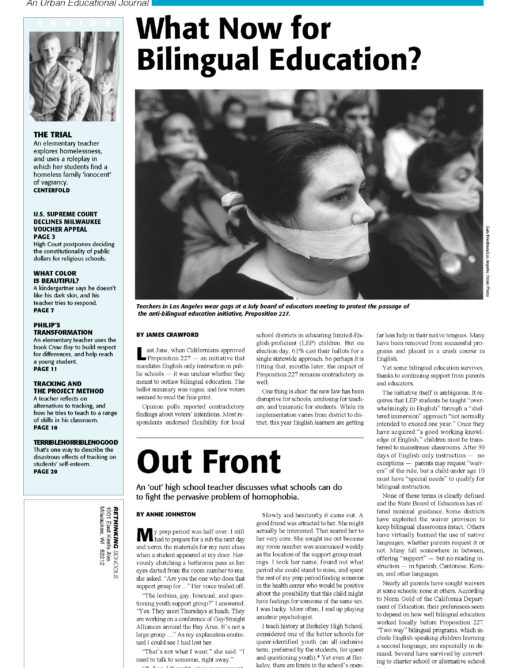Preview of Article:
Keeping Schools on Track
Research has documented the inequitable effects of tracking, yet the practice persists. Why do so many reformers sidestep the issue?
Unfortunately, patterns of discrimination and resegregation through tracking are not limited to one district here and there. National databases show that poor, African American, and Latino students are most likely to be in “go nowhere” courses, while white and middle class students are disproportionately enrolled in those courses that facilitate access to further educational opportunity.
Tracking also undermines overall achievement in districts where poor, African-American, and Latino students are the majority. In such districts, sorting practices typically produce a dominant district culture that emphasizes low-level remedial learning for entire schools.
Given research findings on the harm of tracking, one might expect the current army of school reformers to support policies and practices that would offer the challenges of the high-track classes to all students in heterogeneous classrooms. But, for a variety of reasons, few reformers in positions of authority have dared to make a case for alternatives to tracking.
Some worry that separate groups for “top track” students are necessary if those students are to make progress. Yet, in reviewing data from the national educational longitudinal study of 1988, Jomills Braddock II and Robert Slavin found that, in fact, high-scoring eighth graders in tracked schools did no better than their counterparts in untracked schools. Moreover, recent data highlight how high-scoring students can benefit dramatically from detracked classes. Reporting on the progress of all students in a literature-based, cooperative learning curriculum, Doug MacIver and his colleagues from Johns Hopkins University report significant gains in reading scores for all students at all levels of proficiency. In addition, the gains in the Philadelphia middle school they studied were actually greatest for high-scoring students in these multi-ability grouped classes.
More difficult to understand are reformers who propose to address the problem of low student achievement through “solutions” that further entrench school labeling and tracking practices. Take, for example, the increasingly popular issue of grade retention, packaged under the slogan “no social promotion.”

